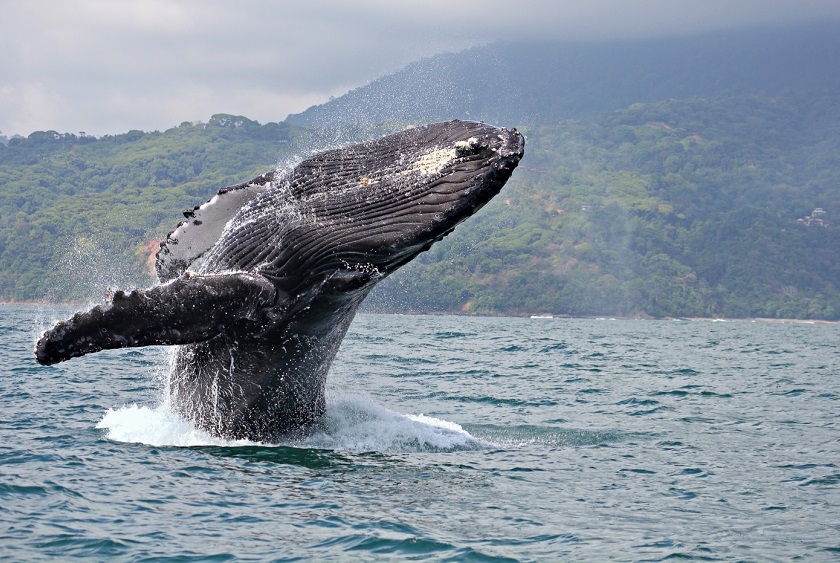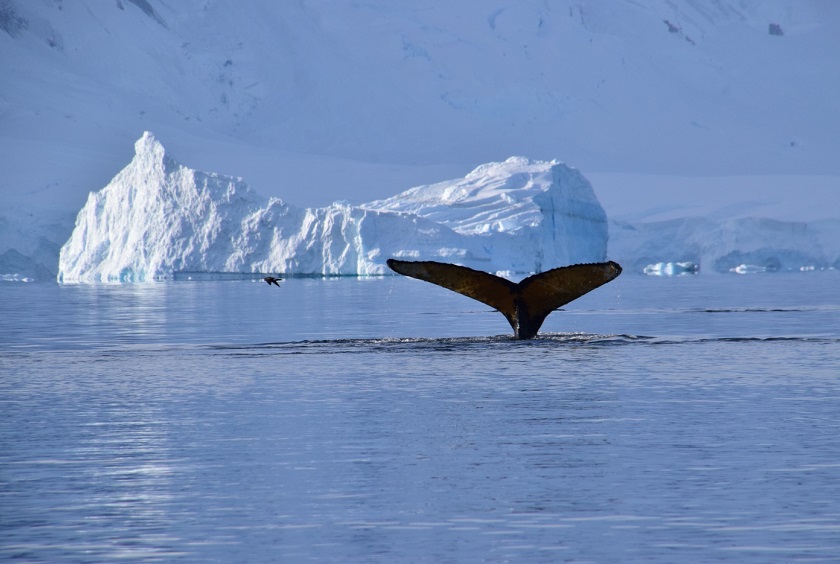The best whale watching locations in Latin America

Latin America has plenty of opportunities for whale watching. Different species of whales can be found both along the Pacific coastline, as well as on the Atlantic side. From Baja California all the way to Antarctica, these are the best places and the best times to get up close to these magnificent creatures as they migrate to the warm waters of Latin America.
You might also like:
-Close encounters with marine life
-Our favourite wildlife holidays
1. Baja California, Mexico – January to March
Between February and March, gray whale sightings are highly likely in the serene Baja Californian bay of Magdalena and San Ignacio. These are among the world’s most popular sites and it’s here where you can see the gray whales that have travelled 20,000km from Alaska to calve and nurture their young in warmer Mexican waters. Take a boat trip to see scores of these sociable creatures as they come up to the surface for a good look at their visitors. The best time to see this incredible event is between February and March. With some luck you may also see humpbacks.
Unlike the curious grey whale, the blue whale is shy in the presence of humans, so you may have to take a boat ride quite far out to sea and wait a number of hours before sighting any. But if you do, it will be well worth your patience. At up to 30m long and with a maximum recorded weight of 173 tonnes, it’s the largest animal to have ever existed on earth. You can take a boat trip from Loreto Bay between January and March for your best chance to see blue whales.
2. Pacific Coast, Panama – July to October
Panama is another popular whale-watching location; with various spots on the Pacific coast, you can observe humpback whales between July and October. Several thousand of these magnificent animals migrate from both hemispheres, and can be spotted from the shore or on a boat trip from the Azuero Peninsula and the Pearl Islands - boat trips start from Pedasi, Playa Venao and Boca Chica at Azuero Peninsula and from the island of Contadora on the Pearl Islands. The Pearl Islands have actually earned a reputation as a prime site for whale-watching, as the animals congregate here to breed and give birth.

3. Santa Catarina, Brazil – August to late October
Observe southern right whales breaching off the coast of Santa Catarina in southern Brazil between August and late October, as they mark their arrival from Antarctica. These ocean creatures migrate north to birth and nurse their calves in the warmer waters of Brazil, setting the stage for an inspiring spectacle. Whales here tend to come closer to the shore, meaning more time on this trip will be devoted to watching and admiring the animals rather than spent sailing out to deeper reaches.
4. Pacific Coast, Ecuador – June to October
Spot humpback whales off the Pacific Coast in Ecuador on a specialist whale-watching boat trip and you could find yourself awed by the sight of a colossal tail dramatically crashing down against the surface of the water, or a head rising up to reveal a knowing eye beneath rows of barnacles. Thanks to the Humboldt current, Ecuador Pacific’s waters are a breeding ground for the humpback whale, one of the largest and most impressive creatures on this planet.
5. Valdés Peninsula, Argentina
Between June and December, the southern right whales arrive from Antarctica and can be seen in the waters off the Valdés Peninsula. These 15m giants of the southern seas birth and nurse their calves here and offer a spectacular sight that few other wildlife sightings can match.
6. Antarctica – November to March
Throughout the Antarctic summer (November to March) you can observe a wide variety of whales, including minke whales, humpbacks, sperm whales and southern right whales. And even though orcas are technically a member of the dolphin family, they are a particularly striking sight and are also commonly found in Antarctic waters. View these magnificent creatures from a zodiac or from the deck of your expedition ship.

7. Holbox, Mexico – June to September
Between June and September, Holbox is one of the best places in the world to swim with the magnificent whale shark, the world’s largest fish. Not technically a whale, this giant shark may look a little intimidating, but poses no threat to humans. They are filter feeders and feed almost exclusively on plankton.
Need some more inspiration? Why not check out our holidays that offer whale watching experiences:
Spot grey whales and humpbacks on our Baja California and the Sea of Cortez Cruise holiday, see a variety of whales in the Antarctic Circle on one of our Antarctica expedition cruises, or visit Santa Catarina and see the southern right whales close to shore on our Self-drive Southern Brazil and Buenos Aires holiday.
Tailor-made holidays
Flexible, custom-made holidays to Latin America created to match your exact requirements: our tailor-made itineraries are as unique as the clients for whom they are designed.
Design my tripPapagaio
Your edit for Latin American inspiration
Our exciting range of articles on Latin America explore everything from iconic destinations and lesser-known cultural gems to delicious traditional recipes. You’ll also find exclusive travel tips, first-hand client reviews and the chance to get your personal questions answered by our travel experts.
View Extraordinary Inspiration






































